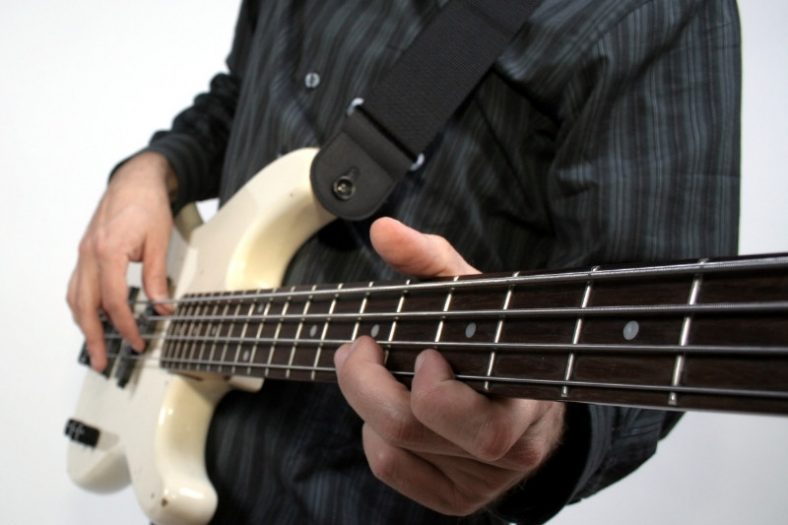How to Write a Bass Line (An Easy Guide)

A bass line is essentially constructed out of Root notes and their progression on a bass guitar. You might be wondering, what makes a good bass line? This is no secret, as there are actually good tips and formulas that can help you construct a good bass line.
A good bass line can help bring out a song even more and has been known to be used across a lot of different musical genres like rock, blues and jazz, and even pop.
The bass is an important tool in the world of music. The use of baselines has a significant impact on the way we hear music. Hearing a fantastic bass line may be unforgettable for a few days.
Contents
What Makes A Good Bass Line?
A good bass line consists of a few different things, like interacting with the drums in the song, it also adds an interesting element for the listener as well as shows off the unique skill and style of the bassist.
First and foremost, a good bass line should complement the melody and the whole theme of the song. It commonly establishes the chord progressions centered around the root notes.
There are two types of baseline commonly found in music. There’s the “walking bass line” that uses scales or arpeggios that center around the chord progression of the root notes. This allows the bassist to “walk” from certain chords to others.
Then there’s also a “bass run”, which is also referred to as a “bass solo” or “break”, which centers around the bass player showcasing his skill. They’re often improvised riffs similar to a guitar solo only the bass version.
A Few Tips On Writing A Bass Line
The first step towards writing a good bass line is figuring out the root note. This means we have to see what key the song is in and what are the main chords used. By figuring this out, you basically have the blueprint laid down to construct your bass line.
Using those root notes in the chord progression, you’ve already laid out a few steps along the way. Let’s say, for example, you have a C major, then a G major, a C major again, and then an F major. So these four chords are basically checkpoints that you can use to bounce your baseline off of.
By starting out from the C major, you can play a few notes that complement and jump around this note, using some components of a C major scale or even improvising to eventually get to the G major as your next checkpoint. Then you can also use some elements of a G major scale or even jump a few to get your next checkpoint and so on.
This is a pretty straightforward technique that you can use and it’s a pretty simple way to construct a basic but good bass line. Just by figuring out the root notes in the chord progression, you basically have 50% of the work done.
Keep in mind that the notes you use in-between chords have to complement that melody because if you use a lot of dissonant notes, then the whole song could fall apart and won’t sound anything remotely good.
Additional Tips You Can Use
There are a few other ways to approach this subject that have been proved to work in the past. Although figuring out the root note and using scale components to bounce off of checkpoints is a surefire technique, if you always use it, it will start to get boring in time.
A good way to spice things up is to try playing repetitive notes, for example, when using scale components, you don’t have to use all the notes in the scale, you can just find two or three and play them repetitively. You can even take a break in a certain time frame where a note should be, this will make things really interesting as it will deviate from the original rhythm, creating more interest.
You can also use a syncopated rhythm just to keep things moving. Syncopation means playing notes when you least expect them, or in simpler terms, stretching or reducing the time between notes.
You can also try playing quarter notes or eighth notes. This will produce a more pumping vibe into your bass line and therefore result in a much more interesting piece to listen to.
Using octaves of certain notes has proven to work as well. When you have trouble figuring out what the next note should be, you can just play the octave of the note you are currently on and see if anything else comes to mind while progressing.
Conclusion
Constructing a good bass line is not as hard as it seems. Following these tips that I’ve laid out will surely get you on the right track to devising your first bass line. You just have to keep in mind the key components to writing a good bass line.
First, you should establish the root note in the chord progression of the song, then use those notes as checkpoints while you figure out the notes in between. Use the additional tips such as playing syncopated notes, repetitive notes or even playing offbeat just to keep things interesting and pumping. Octaves are also a good way to go when you’re stuck. I hope this helps you on your journey to creating your bass line.





